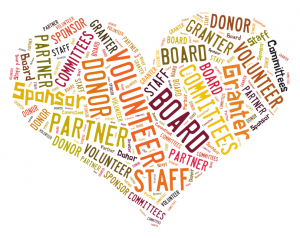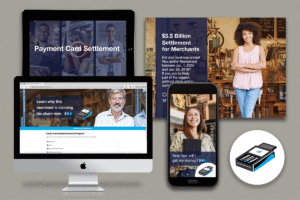
By Molly Borchers, Senior Communications Strategist
One of the things I love most about my job is meeting great people doing great things for the San Diego community. I have the privilege of supporting the community relations department for one of my client partners, which means I help them spotlight the great work of compassionate organizations like Ocean Discovery Institute, Jacobs and Cushman San Diego Food Bank, Workshops for Warriors and many others.
 After moving here from Ohio, I was struck by the beauty of San Diego’s beaches, bays, palm trees, rivers, canyons, mountains and deserts. With a little time, I was equally in awe of the people who are so deeply connected to their tight-knit communities, of all the passionate innovators who live here, of just how much people love this town.
After moving here from Ohio, I was struck by the beauty of San Diego’s beaches, bays, palm trees, rivers, canyons, mountains and deserts. With a little time, I was equally in awe of the people who are so deeply connected to their tight-knit communities, of all the passionate innovators who live here, of just how much people love this town.
As of 2014, there were 9,364 501(c)(3) non-profits in San Diego County. That’s a lot of people doing a lot of good. But a major problem for these organizations is that they often don’t have the time or the funding to toot their own horns.
It’s critical for non-profits to raise visibility in order to get funding and fulfill their missions. Here are five communications and public relations tips for non-profits who think they don’t have the bandwidth or budget to promote themselves:
- Map out a plan: At the beginning of each year, make it a priority to develop your non-profit’s communications road map. There may not be a lot of time or resources available, but try to carve out space for one promotional activity each month and set calendar alerts to stay accountable.
An example of what that could look like? Perhaps in January, you write and distribute a press release about a fundraising event you’re having. In February, send out a targeted media pitch on the topic you’re trying to generate awareness for. In March, apply for a major speaking opportunity. And so on. By making sure you have at least one activity a month, you sustain the communications momentum with the least time investment possible.
- Leverage strategic partnerships: I don’t have to wax poetic about the value of building your network. Once your network is in place, though, leverage the help of strategic partners to support your communications efforts.
- If your non-profit has received a corporate grant, ask that organization if they’d also be willing to support you with promotion.
- Try meeting people in the communications/PR field. You never know what counsel or advice they’d be willing to give.
- Collaborate with other non-profits with similar missions to see if you can pool resources.
- Don’t ignore free tools like blogs and social media: I’ve spoken with non-profit leaders who view social media as a low-priority, time-sucking task. This couldn’t be further from the truth. Organizations of all types have three communications channels: paid (advertising), earned (media coverage) and owned (websites, blogs, social media, newsletters). Only one of those is truly free.
Why eschew free platforms where you have the opportunity to both control the message and engage directly with potential donors and volunteers? My tip: find 1-2 hours to develop a strategic social media and blog plan. Then, hire an eager college intern to help execute. They can schedule most social media posts in advance via HootSuite or Buffer. Blogging brings excellent SEO benefits and can help elevate your website to the first page in Google. By using an intern to help, you’re helping them build their portfolio (doing yet another service to the community) without taxing your regular staff resources.
 Be intentional with measurement: Often, communicators confuse output with outcome. For example, an output is “number of media mentions” or “speaking opportunities secured.” However, an outcome would measure the impact of that effort. Did your communications efforts increase volunteer inquiries or donations? That’s where the measurement gets juicy.
Be intentional with measurement: Often, communicators confuse output with outcome. For example, an output is “number of media mentions” or “speaking opportunities secured.” However, an outcome would measure the impact of that effort. Did your communications efforts increase volunteer inquiries or donations? That’s where the measurement gets juicy.
I recommend measuring a bit of both. Perhaps set a goal for number of media placements and then measure them on a graph against website visits, number of volunteer inquiries and donations, then see how the promotion efforts correlate with your desired outcomes.
- Ask for help: Don’t be afraid to ask the experts for a little help. There are several communications agencies who offer services priced to be very friendly to non-profit budgets. Sometimes there is even an opportunity to receive pro-bono work, depending on your relationship with the agency.
Work for or volunteer for a non-profit? If you think we can be of assistance, let’s connect. Email me at mborchers [at] wrightoncomm.com. Engaging in highly targeted, measurable social media, PR, multimedia programs can help you achieve your mission.
Check out our similar posts below:
5 Essential Elements of Every Community Outreach Plan
How Infographics Work and Why Your Brand Needs to Use Them More












 Grant Wright
Grant Wright




 Corie Fiebiger
Corie Fiebiger
 Shae Geary
Shae Geary Roman Lukjanenko
Roman Lukjanenko Phelan Riessen
Phelan Riessen Katrina Early
Katrina Early Hamish Marshall
Hamish Marshall
5 Comments
So many gems in this post but I especially liked the point made about owned media being the only communications tool that’s actually free.
I simply want to mention I am beginner to blogging and site-building and actually savored your web-site. Probably I’m want to bookmark your blog . You amazingly come with superb articles. Regards for sharing with us your web page.
Thanks extremely helpful. Will certainly share website with my buddies. https://www.youtube.com/watch?v=vIJzPyBZiQA
I enjoy you because of your entire efforts on this website. My mum really likes getting into investigations and it’s simple to grasp why. I hear all relating to the compelling means you present valuable tips and hints via this web site and as well as encourage participation from others on this topic while our own child is in fact studying a lot of things. Take advantage of the remaining portion of the new year. You’re the one conducting a stunning job.
This is a nice post. Internet is playing a vital role in creating public relations. Thanks for sharing interesting tips.
Comments are closed for this article!